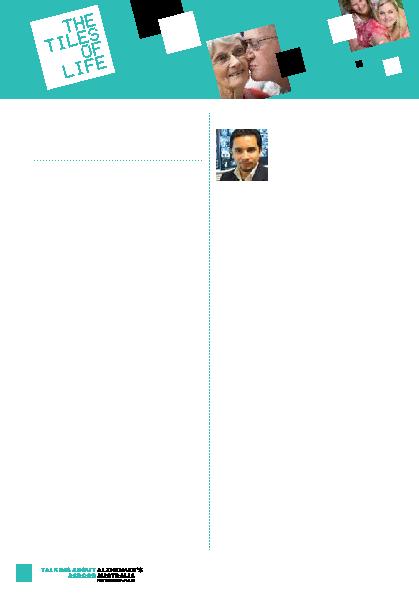
for Non-Pharmacologic Research, Theory, and
Clinical Practice.
sentences have proven effective for enhancing
conversation and memory-related behaviors
of persons with dementia. This presentation
will provide an overview of the evolution of
Memory wallets and memory books, from
simple tools to enhance conversation, to a
variety of written and picture cuing systems to
repair cognitive-communication breakdowns,
such as repetitive questioning, agitation, and
uncooperative behavior. The communication
challenges that accompany advancing
dementia often result in having caregivers
serve as proxy informants for making personal
choices and describing the person's quality
of life. Visual cuing systems that allow
the person with dementia to communicate
preferences and self-endorsement of quality
of life indicators which may differ from the
proxy's opinion will be described. Other
visually based programming, such as dementia-
specific tours of art museums and other
art-related activities, also have the potential to
maintain conversation skills and engagement
in desired activities, thus enhancing the overall
quality of life of patients with dementia and
their caregivers.
Valenzuela recently established
and leads the Regenerative
Neuroscience Group (RNG) at
the Brain and Mind Research
Institute, University of Sydney.
medicine and neuroscience research, and he
was previously a Senior Research Fellow at the
School of Psychiatry, UNSW. In 2006, Michael
received the Australian Museum's Eureka Prize
for Medical Research, and in 2010 a NHMRC
Excellence Award for the top-ranked clinical
Career Development Award.
furthering our understanding of the competing
forces of neuroplasticity and degeneration
in the ageing brain and harnessing this
knowledge to better prevent and treat
dementia.
boundaries. These include working with
adult stem cells, animal models, brain tissue,
neuroimaging, human clinical trials and large
multinational population-based cohorts.
Michael has a particular interest in new brain
imaging technologies such as Magnetic
Resonance Spectroscopy to help `see' stem
cells in the live brain, as well as a fascination
with the canine brain and the syndrome of
`canine dementia' as dogs get older.
premium on creativity and synthesis of ideas
and technology across disciplines. This is vital
when attempting to bridge the translational gap
between laboratory findings, animal studies
and our ultimate goal, the advancement of
human health.